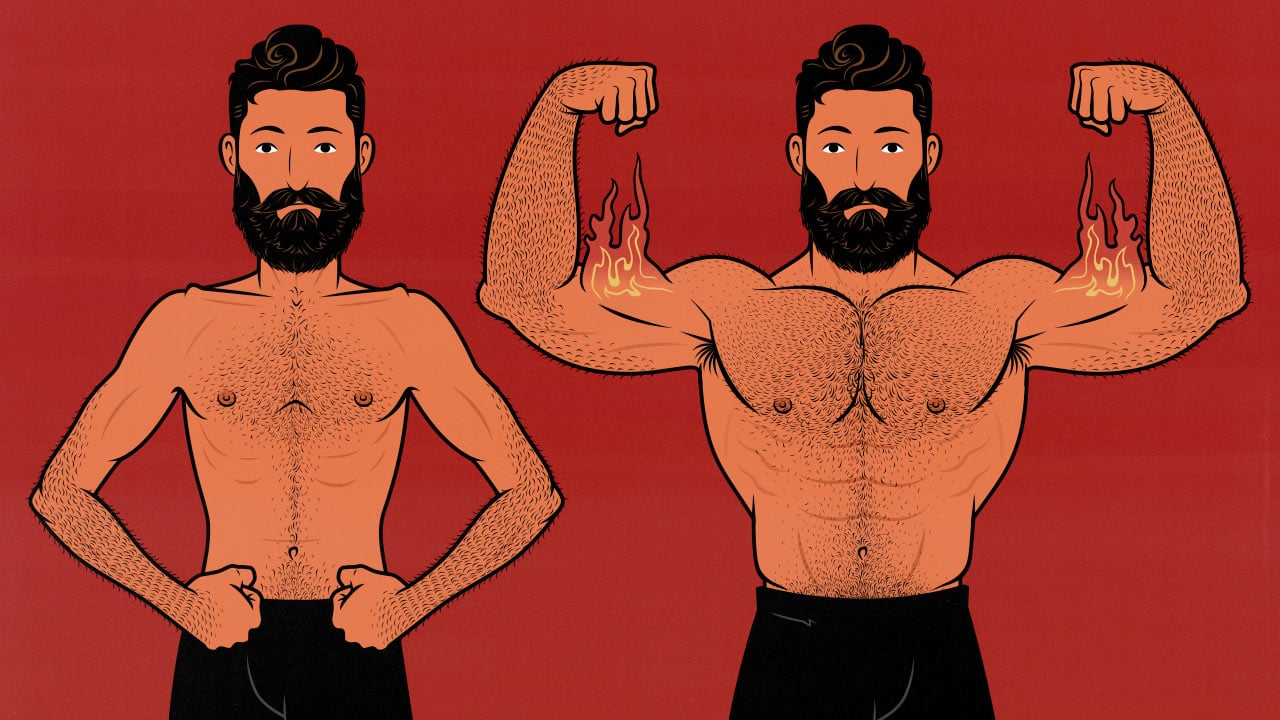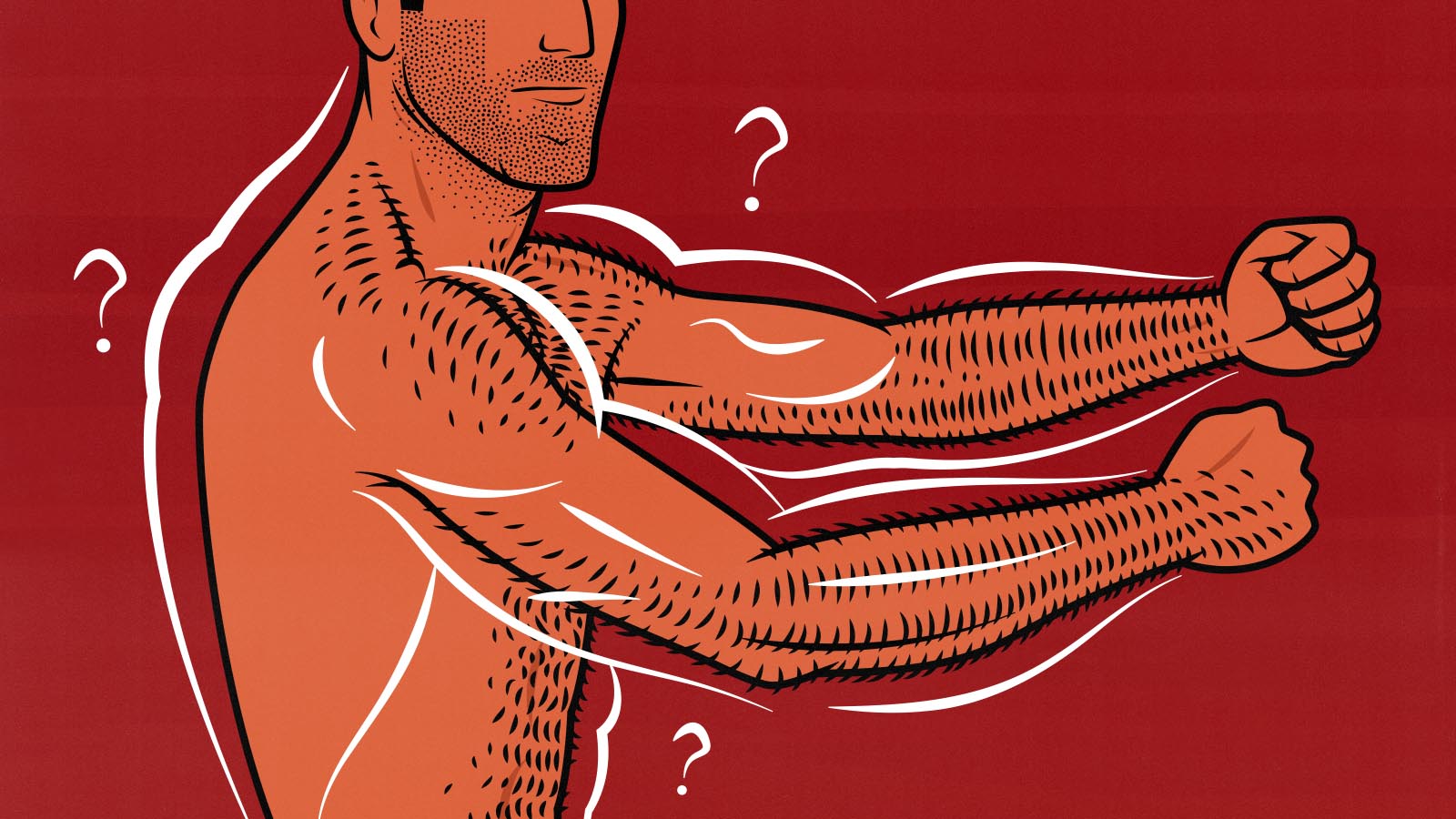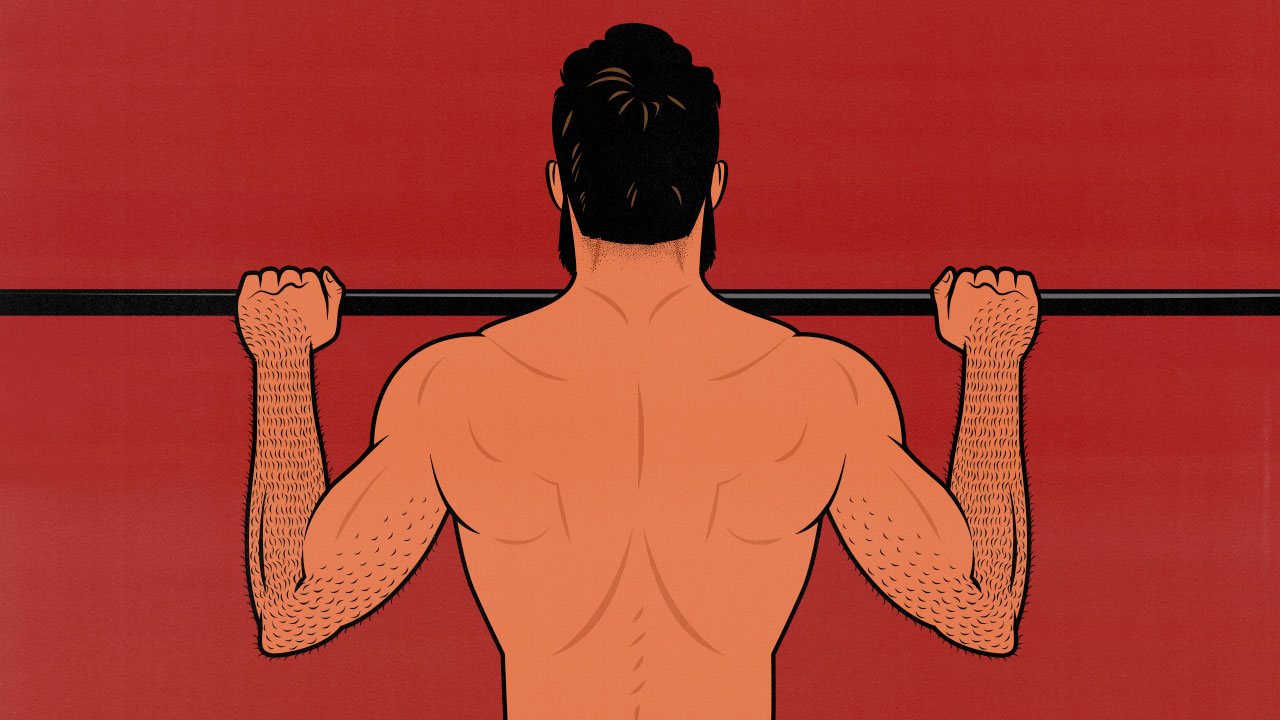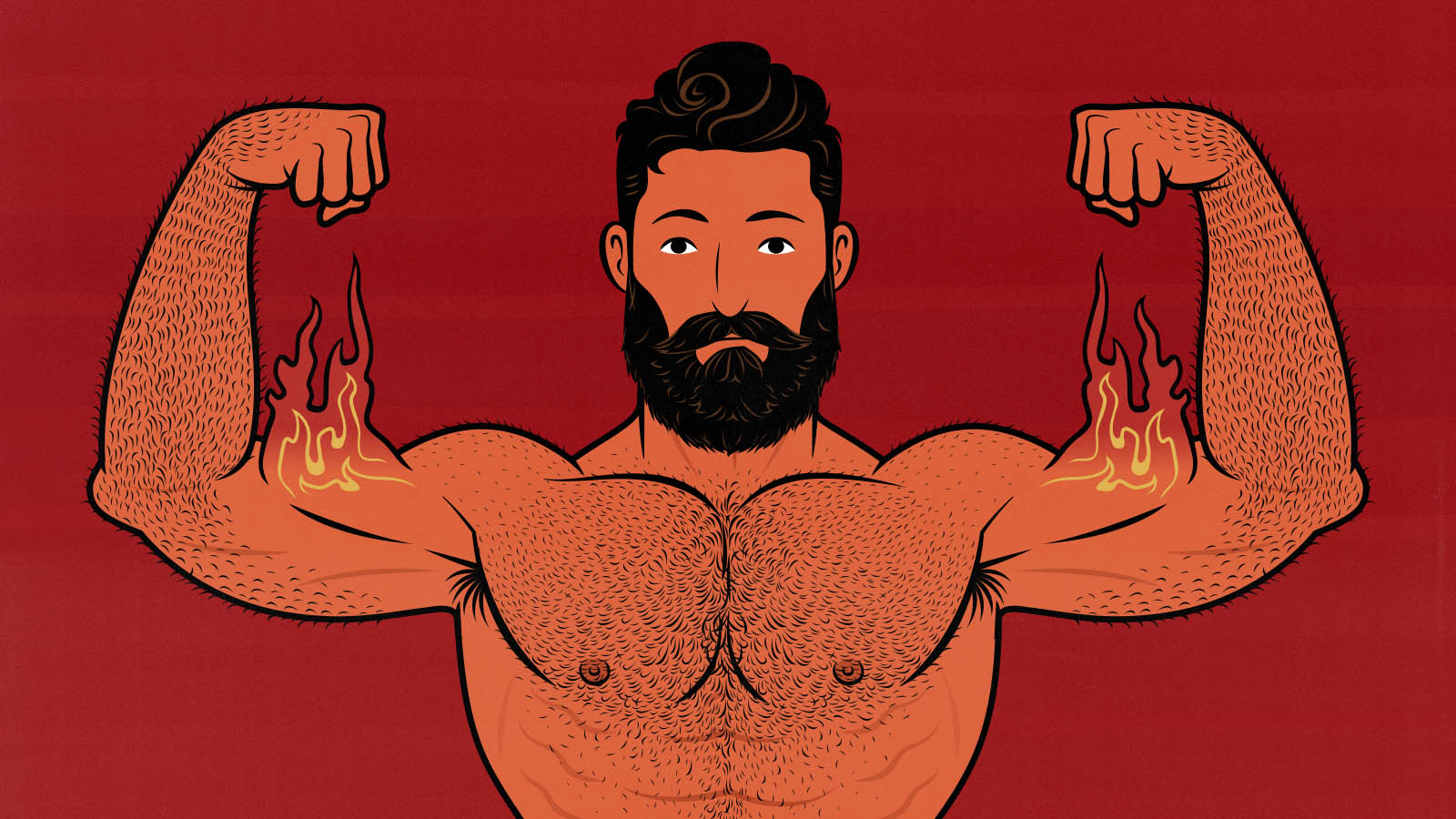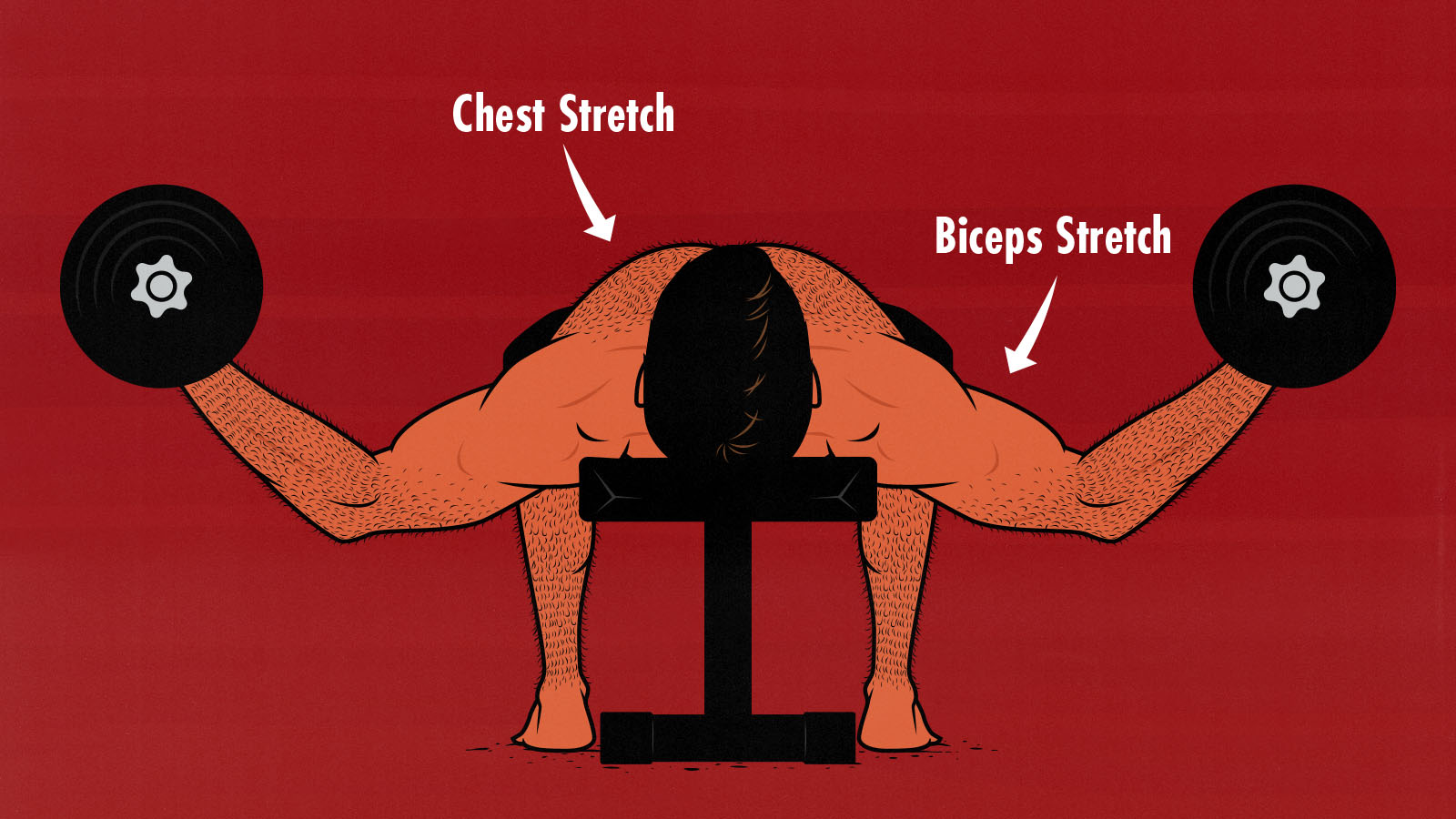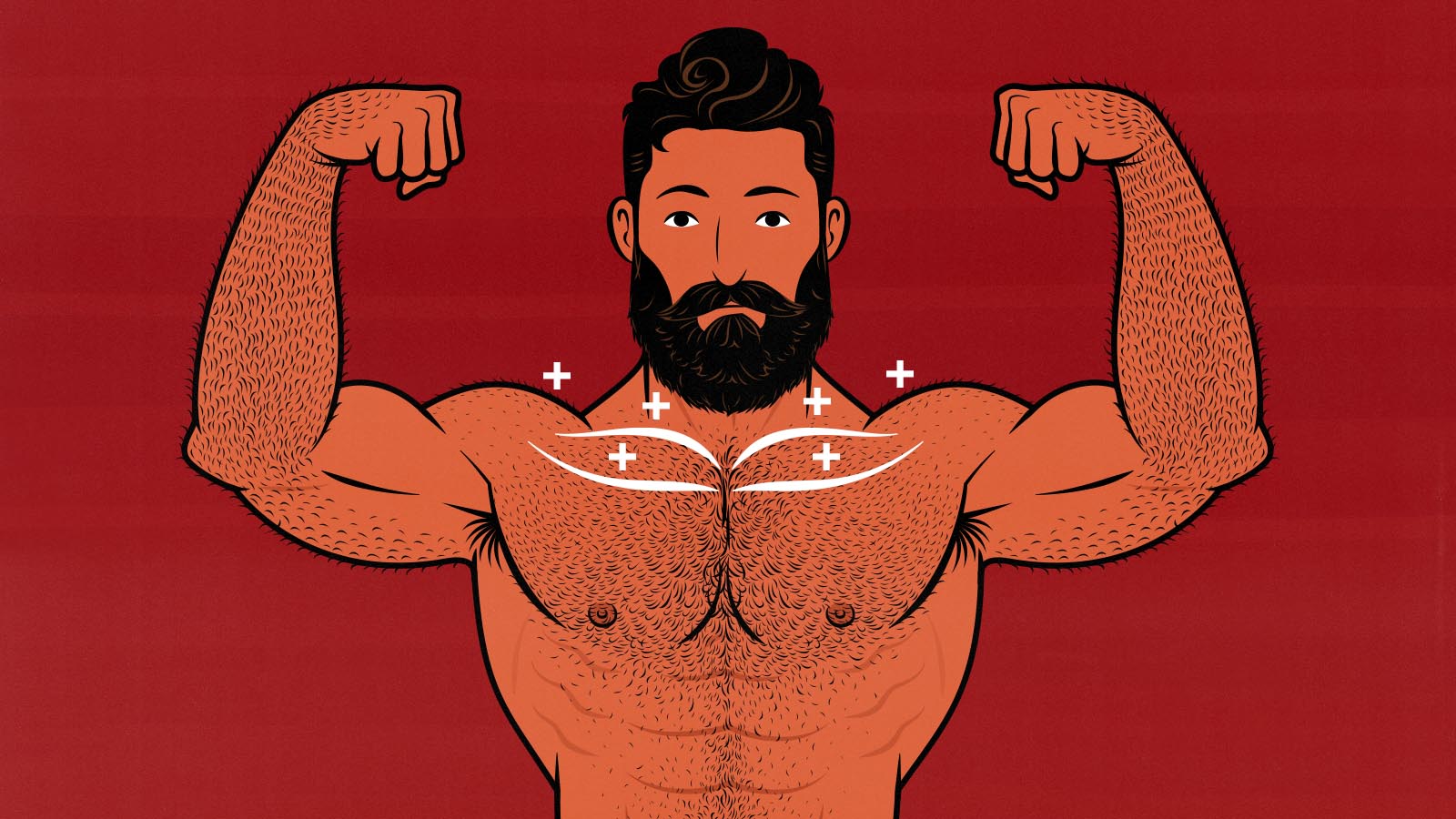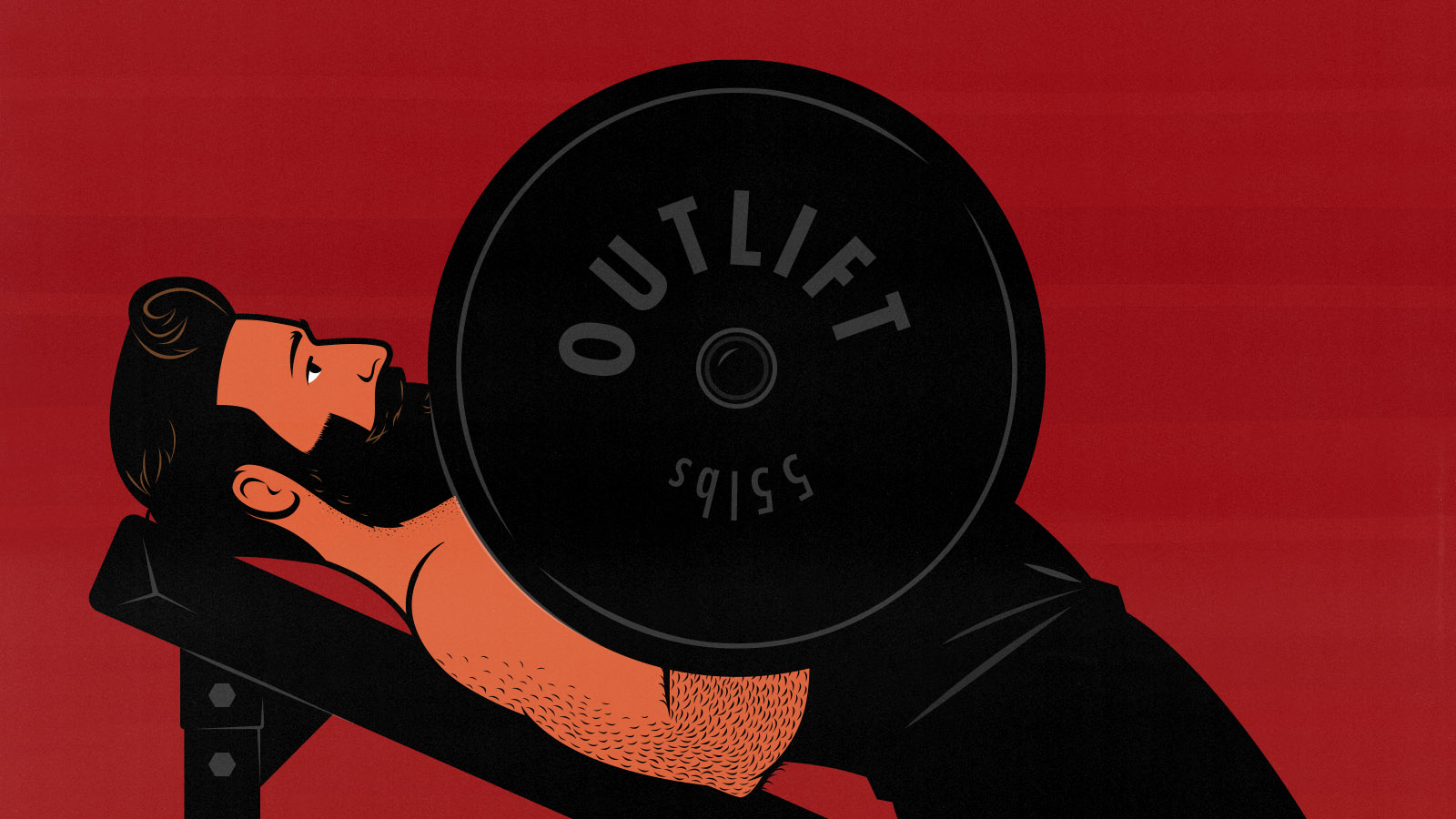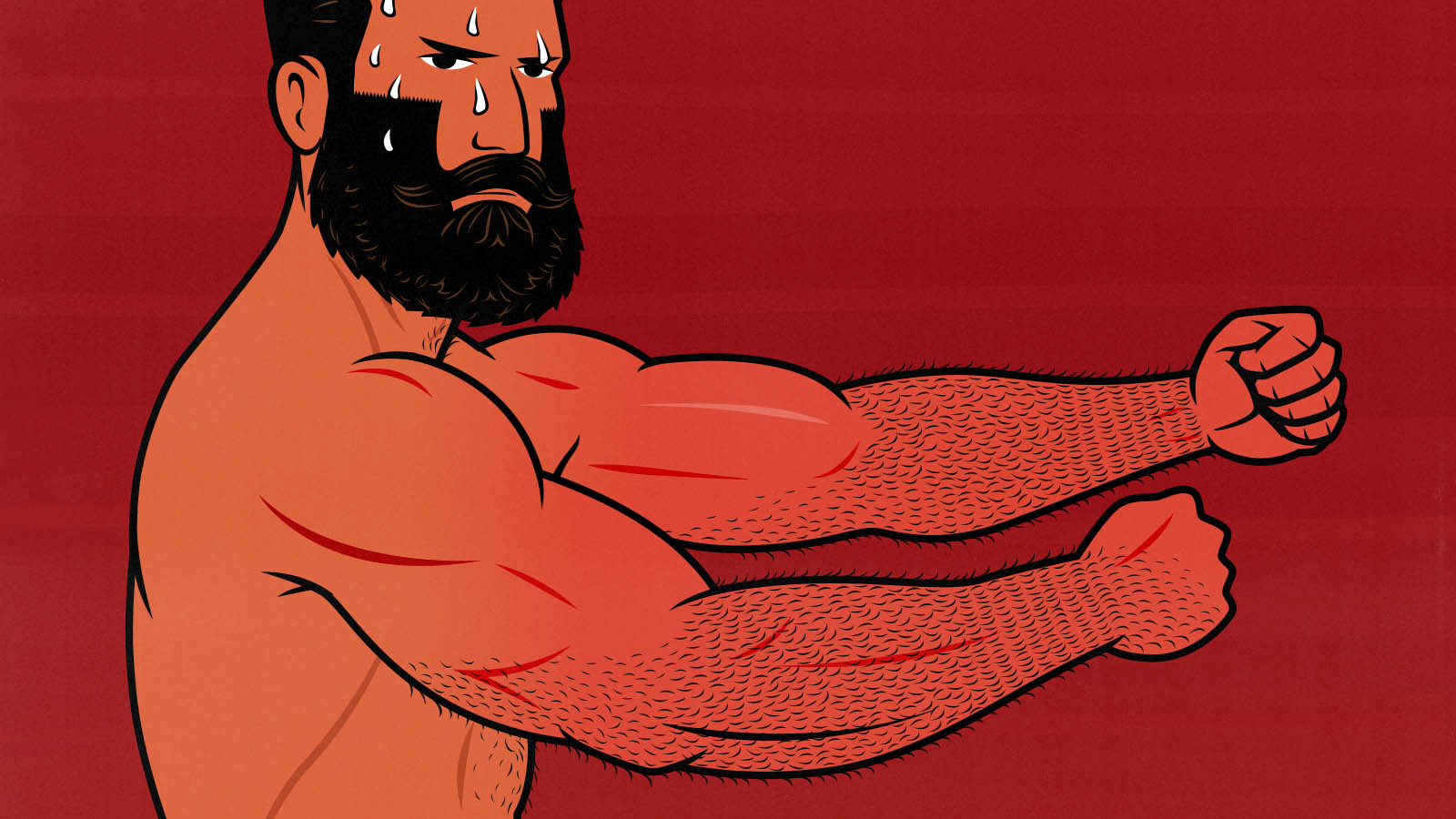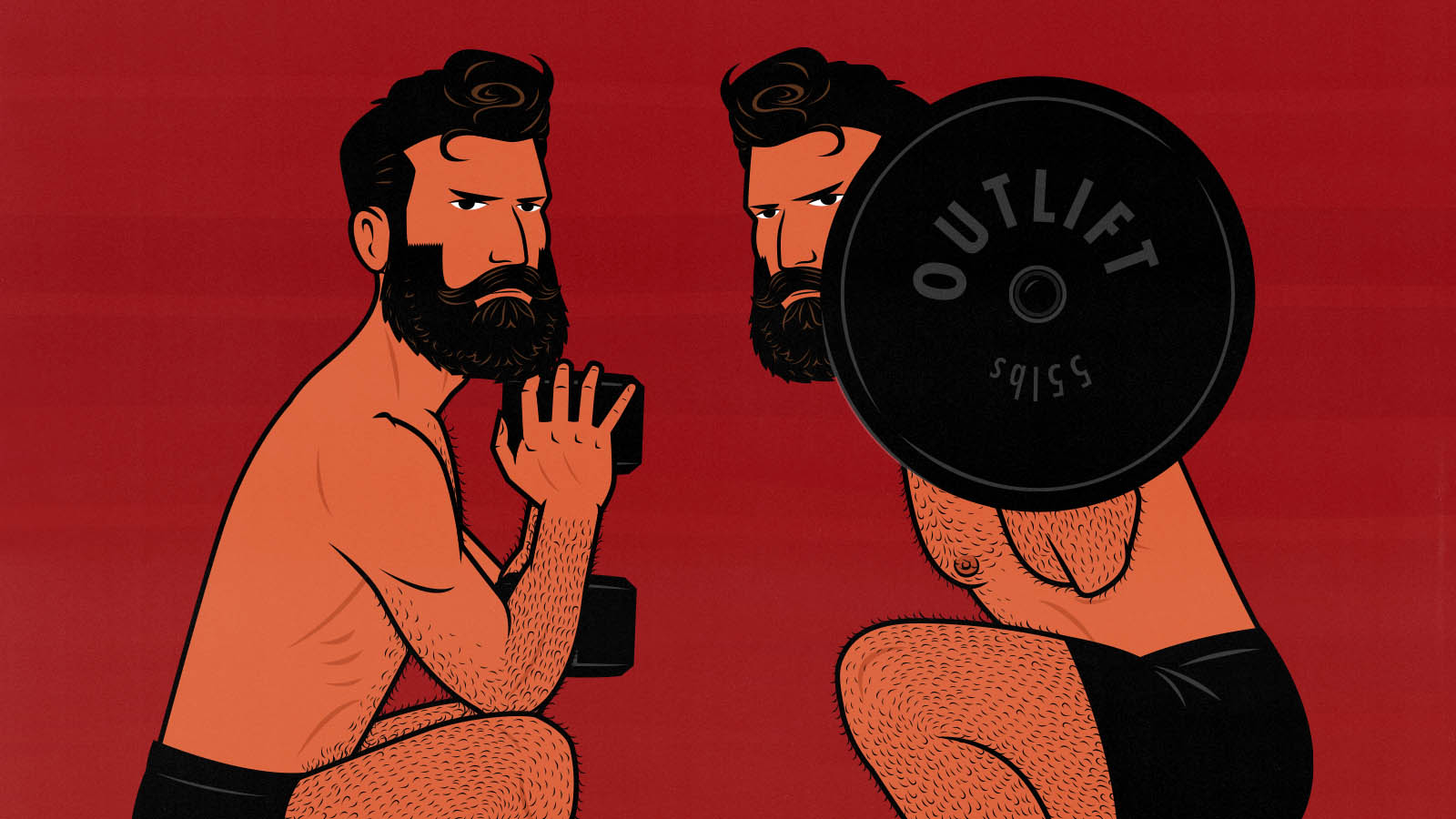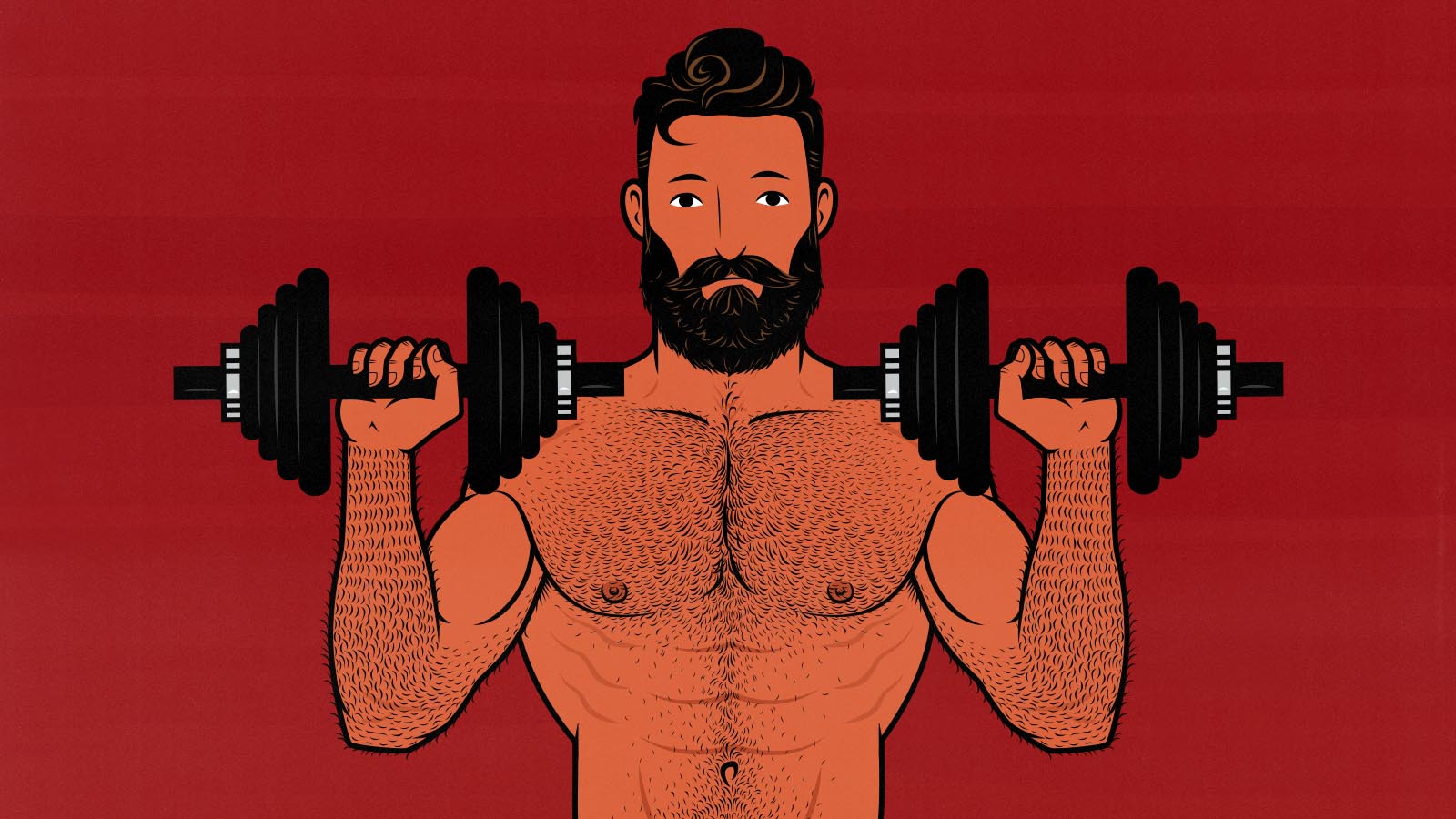Articles
How to Build Muscle—Full Guide
To build muscle, you need to do 3 things: challenge your muscles enough to stimulate growth, eat enough food to fuel that growth, and then recover.
We’ve helped over 10,000 people bulk up over the past 10 years, ranging from everyday people all the way up to college, professional, and Olympic athletes. This is what we live and breathe, all day, every day. It works every time, guaranteed.
But there’s nuance here. Some types of resistance training are better for stimulating muscle growth than others. Some types of food can help you make faster, leaner gains. And you don’t want to eat so much that you get fat.
So, how should you train, eat, and rest to build muscle?
Delve into the detailsHow Big Can You Get Naturally? FFMI Breakdown
There’s an old myth that natural lifters can get up to a fat-free mass index (FFMI) of 25. The idea is that if someone has an FFMI under 25, they stand a good chance of being natural, whereas if their FFMI is greater than 25, they’re probably lying about being natural.
FFMI is your lean body mass. It’s your body mass index (BMI) with the fat taken off. It’s a popular way for bodybuilders to compare their size, since it measures how much muscle they have while (somewhat) accounting for height.
That old myth is wrong in two ways:
- Natural lifters with outlier genetics often exceed an FFMI of 25. There are many examples of this. I’ll go over three of my favourites.
- Most natural lifters probably can’t get to an FFMI of 25. It’s bigger than you think, especially if you have a smaller frame.
Unfortunately, that makes it really hard to tell if someone is natural by looking at their FFMI. It also means that aiming for a natural FFMI of 25 isn’t a very good approach. It works better if you try to account for your genetics. You can do that by factoring in the size of your bones. I’ll go through all of it, then give you a calculator you can use.
Delve into the detailsHow Many Pull-Ups Can the Average Man Do? What’s Good?
When I surveyed our YouTube audience, half could do 0–9 pull-ups, half could do 10–19 pull-ups, and a handful could do 20+. Quite a few guys were stuck at 0. There were almost 600 responses, which was enough to be confident in the results, but YouTube surveys are pretty limited. I went deeper with our newsletter.
The average man on our Bony to Beastly newsletter can do 10–14 pull-ups. 30% of them could do more, and another 30% could do less.
Most of these guys were between 20 and 60 years old, with the most common age being about 35. The vast majority of them are naturally thin, virtually all of them are natural, and most lift weights, do cardio, eat well, and feel good. These are healthy guys who are interested in fitness.
I then segmented them based on their lifting experience. At first glance, the results are strange:
- No Lifting Experience: 10–14 pull-ups
- First year of lifting: 5–9 pull-ups
- 1–2 years of lifting: 10–14 pull-ups
- 3–5 years of lifting: 10–14 pull-ups
- 5–10 years of lifting: 10–14 pull-ups
- 10+ years of lifting: 10–14 pull-ups
Why are guys who don’t lift weights better at pull-ups than people who do?
And why aren’t people getting better at chin-ups after that first year?
Delve into the detailsIs DOMS a Sign of Muscle Growth?
Most people think delayed onset muscle soreness (DOMS) is a sign of muscle growth. The idea is that if you train a muscle hard enough to make it sore, then you’ve trained it hard enough to stimulate muscle growth.
That isn’t quite right, though. There’s an interesting new study about how muscle soreness and damage affect muscle growth. The researchers divided people into two groups:
- The DOMS group: The first group dove right into a tough workout program, suffered a ton of muscle damage, and felt incredibly sore. They gradually toughened up, and after a couple of weeks, they were recovering fine.
- The no soreness group: The second group spent a couple of weeks doing a warm-up routine designed to get them used to the stress of the workout program. When they finally started training hard, they got so little muscle damage that it couldn’t be detected, and they didn’t feel any muscle soreness at all.
Both groups grew the same amount, showing us that muscle damage and soreness aren’t necessary, helpful, or harmful. We get the same results either way.
There’s a catch, though.
Delve into the detailsThe Chest & Biceps Workout (Strange but Powerful)
Chest and biceps aren’t usually trained together in the same workout. It’s far more common to pair the chest with triceps and the back with biceps. It’s also common to have upper-body workouts and full-body workouts. It’s rare to have a chest and biceps workout.
But training your chest and biceps together can be effective. There are two ways to approach it:
- The PURE chest and biceps workout: You train your chest and biceps, and that’s it. This fits really well into a Bro Split, adding some extra biceps training to your Chest Day.
- The chest and biceps EMPHASIS workout: You train your chest, back, shoulders, biceps, and triceps, but you put the emphasis on your chest and biceps. This fits much better into Upper/Lower Splits.
I’ll lay out both workouts.
Delve into the detailsA Review of the Macrofactor Macro-Tracking App (in 2025)
We’ve been using the Macrofactor calorie-tracking app since it launched 5 years ago. We’ve used it ourselves, tested it against all its major competitors, and had over 600 clients use it to build muscle, lose fat, or recomp. We’ve tracked their scale weight, body measurements, strength, and progress photos while using the app.
One of the important things to point out is that Macrofactor isn’t made by tech bros trying to get rich. It was founded by Greg Nuckols, one of the most respected research reviewers in the fitness industry. He’s been writing about the science of building muscle and losing fat for almost 20 years, and he’s earned a great reputation while doing it. Everyone in the fitness industry knows him. He isn’t a mysterious figure.
The science is good, but there’s more to a good calorie-counting app than good science. How easy is it to use? How much of your time will it devour every day? And perhaps most importantly, how does it compare against industry giants like MyFitnessPal?
Delve into the detailsThe 5 Best Upper Chest Exercises (Dumbbell, Barbell & Machine)
The best upper chest exercises are the incline bench press, incline fly, landmine press, chest press machine, and feet-raised push-ups. If you have dumbbells, do an incline dumbbell bench press and incline fly. If you have a barbell, do the incline bench press. If you’re training at a full gym, try the chest press machine.
The research on upper chest exercises is pretty shaky—I’ll cover it in a moment—but pressing on an incline is almost certainly the best way to emphasize your upper chest. The most popular example of that is the incline bench press. Bodybuilders swear by it. Most experts agree with them.
Here’s a quick breakdown of the pros and cons of each exercise, along with a tutorial video showing you how to do them.
Delve into the detailsWhat Muscles Does the Incline Bench Press Work?
The incline bench press works the upper chest, front delts, mid-chest, and triceps. You can emphasize your upper and mid-chest muscles by using a shallower incline (e.g. 30 degrees). You can shift more of the work to your front delts by using a steeper incline (e.g. 45 degrees).
Delve into the detailsHow Long Does a Muscle Pump Last? What About Swelling?
A muscle pump looks impressive for about 30 minutes, then quickly fades over the next 1–3 hours. I surveyed 400 people to double-check. 61% said their pump lasted less than an hour. Only 2% said they could notice a pump two hours later.
But there were also quite a few people who said their pump lasted for 2–3 days. That’s something slightly different. There’s a second effect that keeps your muscles swollen for much, much longer. It explains an interesting lifting myth, too.
Delve into the detailsHow Many Exercises Should You Do Per Muscle Group?
Doing 2–3 different exercises per muscle group gives you more balanced muscle growth and a lower risk of injury (systematic review). It’s one of the more important parts of building a good workout routine. The catch is that the exercise combinations need to complement one another, which means you either need to learn some biomechanics… or read this article.
Delve into the detailsThe Best Dumbbell Exercises for Every Muscle
You can build an entire workout routine out of just dumbbell exercises. There’s no real disadvantage to it, either. Dumbbell exercises are almost always just as effective as barbell, cable, and machine exercises. Often, the dumbbell variation is the best.
I broke down the exercises by body part, giving you the best dumbbell exercises for each muscle group. A fully balanced workout routine would have 1–2 exercises from each category, with those exercises spread out over two, three, or four workout days. If you’re new to lifting weights, I recommend starting with a 2–3 day full-body workout routine.
We’ve got a tutorial for every single exercise. Marco does most of them. He’s a strength coach with over 15 years of experience training college, professional, and Olympic athletes. I made a few tutorial videos, too.
Delve into the details
